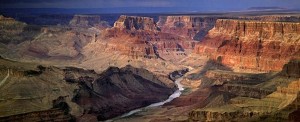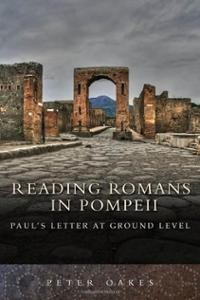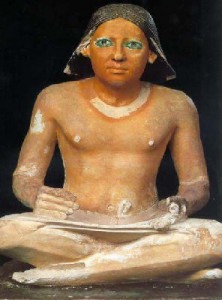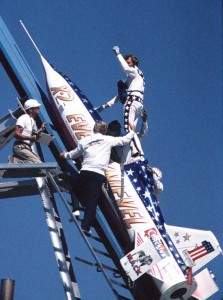Evel Knievel, the Grand Canyon & Us: The Strange and Deep Gulf to the Bible
Author: Bobby Valentine | Filed under: Bible, Books, Church History, Cool Stuff, Culture, Exegesis, Paul, Reading, Romans Sabbath Day Theology, it is early Saturday morning, gets in a DeLorean to take us to the first century once again. Hopefully we will think on a few things that will be informative and in the end helpful. It is hoped that will help us appreciate and read the Bible more clearly than ever. We have prayed the Psalms and now just relaxing and looking out the screen door at the mountains.
Sabbath Day Theology, it is early Saturday morning, gets in a DeLorean to take us to the first century once again. Hopefully we will think on a few things that will be informative and in the end helpful. It is hoped that will help us appreciate and read the Bible more clearly than ever. We have prayed the Psalms and now just relaxing and looking out the screen door at the mountains.
It is amazing how our hidden (in plain view) modern assumptions can drastically impact how we think about the Bible or New Testament in particular and the Way in the first century (See my blog on Assumptions: What we Simply Assume often Hides the Truth). C. S. Lewis once wrote that people blindly assume the world has always been like it is since the dawn of their own consciousness. Oh, for a historical consciousness among God’s people!
My Modern World
On any given day I sit at my laptop, in my office, surrounded by the trappings of Modernity.
I have two complete shelves with Bibles: Hebrew Bibles; Greek Bibles; a Latin Bible; dozens of English Bibles from Wycliffe to unique translations; even a couple Spanish Bibles. I have more books on my shelves than most medieval monks saw in their entire lifetime. Each of these books is bound together, paper on the inside and printed.
I have writing implements – pens, pencils, and I have plenty of paper or sticky notes or Microsoft Office in which to write down any and every thought I have (which are not many!). And I even use my desk to sit at to write or study.
My office and the material that is in my office – or even a typical Christian home in North America – is completely alien to anything a first century person would ever see.
Grand Canyon Divide
The ruminations above are germane. Have you ever stopped, or even slowed down, long enough to reflect on how Paul, Peter, James or John would actually have gone about writing the “letters” that became part of our New Testament. It is dangerous to assume that folks in the first, second or even the third centuries had anything remotely like what we have had in our hands since the dawn of our consciousness – a bound NT.
In my world for me to write a letter to my mom, dad, a friend is a very simple procedure. We dash off a text message or some other electronic data. We may have a longer email and most of us still know what a good old fashioned note sent via snail mail is. Grabbing a pen, some paper and a stamp is almost mindless in its ease. And its cheap! This is, again, a world that no person in the first century and centuries upon centuries later could imagine.
First, in America, it is simply assumed that a person that can read can also write. But this is a modern conceit. We unconsciously take our everyday experience and thoughtlessly place it over the biblical text. We all have had children that can read but whose “writing” is a far cry from “writing.” They may be able to read “See Spot run” but are incapable of writing a letter to the newspaper.
Literacy in our Modern world means reading and writing. This is, again, a modern reality that did not exist even in America a hundred years ago. Literacy in the Greco-Roman world did not imply a person could write with any more sophistication than a first grader in the USA. In reality the vast majority of people in the Greco-Roman world could do neither, read nor write. In our world education means reading and writing, that does not mean that is what Ancient people thought education meant.
Climbing Down the Gulf
So when Paul decided to “write” a letter to Rome, Corinth or Galatia what are steps he would have had to take? We will see that the notion of a secluded Paul, alone in his thoughts, leaning over papyrus is utter make believe.
Writing materials were not just lying around like in my office. The materials to compose any letter, of any length, would have to be purchased from a papyrus merchant in the market. Paper did not exist in the first century. Papyrus was the most common writing material in Paul’s day. This material was manufactured and exported from Egypt to various parts of the Empire. It was not cheap. Egypt protected its market on papyrus like some modern corporations do microchips today.
Papyrus is a reed that grows in the Nile Delta. To make it usable as a writing surface it is harvested. Then it is laid out both vertically and lengthwise to make something that resembles paper. It was left to dry to make sort of a long sheet. This is a laborious process. Generally a “roll” of papyrus was sold, known as a chartes, containing about 12 feet of material (think of rough paper towel rolls). Dealers could cut off smaller portions and sell them to customers. According to Randolf Richard’s excellent study, Paul and First Century Letter Writing: Secretaries, Composition and Collection, a chartes would typically cost about four drachma in Paul’s day.
Four drachma was a little over a week’s salary for a typical first century person. Papyrus is not cheap and people do not just typically have it laying (unlike my table or desk that is covered with papers!). Richard’s says converting figures into our currency is always tricky but to say that a chartes of papyrus would cost about 500 dollars in today’s dollars is not an unreasonable estimate. If the book of Isaiah was put on a scroll (like the Ethiopian would have, his copy would be parchment) the estimated cost would be about 1500 to 2500 dollars for that scroll in our world today. Beyond literacy, this explains why it was exceedingly rare for private individuals to own “books.” Books were owned by the community as at Qumran and various “libraries” in the Greco-Roman world. We see this historical reality at work in Luke 4 when the scroll of Isaiah was taken out of its secure locker and handed to Jesus to read and when finished reading it would be handed back to the person in charge of the books.
The Canyon is Deep
Paul, of course, did not use an entire 12 foot chartes for his letters but any portion of it would not be cheap. But to write a letter you need more than papyrus. You also need a pen and ink … and someone that can write. Paul probably used a “secretary” or scribe in writing all of his letters. That Paul could read is beyond doubt but that Paul could write with ease and sophistication is not a forgone historical conclusion. This is simply a modern prejudice that ignores the Grand Canyon that is between us and the first century Way.
Writing was a professional trade in the ancient world. Kings often did not know how to read nor write. Hiring a scribe to write down your letter could be a costly enterprise as well just like obtaining the papyrus, but Paul seems to have befriended people that had unique skill sets like Tertius (who declares himself to be the actual writer, aka putting the words on paper, of Romans, Rom 16.22) Peter did the same with Silvanus (1 Pt 5.12).
Once an author had gone thru the considerable expense of obtaining papyrus and hired a scribe (or used a friend trained in the art of writing as Paul seems to have done) how would you go about “writing” the letter? In our modern, western, society we like things quiet, so we retreat to a more secluded “private” place to compose our letter. If we imagine this for Paul, or Peter, then we are again imposing a fake world upon our Spiritual ancestors.
In the vast majority of the urban world of Paul a “home” and a “business” are in the same place. A front room that opens to the noisy street where business is conducted and a small back room that was “home.” These were, most of the time, part of multi-story apartment complexes (see Pompeii as a typical example). Paul certainly did not compose his letters in a “private” place. He would have dictated them as part of a community along with his co-senders (Paul frequently lists co-authors in his letters but we tend to ignore what he plainly states).
The scribe/secretary would copy down on papyrus, and even make notes on some wax perhaps, while standing or squatting using the knees as a writing surface. Tables existed in the first century but it apparently never occurred to any person in the ancient world to use them as a place to write. Bruce Metzger has conclusively shown that no one ever used what we call a “desk” to write on before the fourth century AD. It is conceivable, according to Richards, that Paul could have dictated some of his letters in the common areas of these apartment buildings. Certainly not a place of peace and quiet and privacy is a modern western invention.
So based on what we actually know from archeological and literary sources from the first century, scholars have put the following estimated “price tags” on Paul’s Epistles from start point to finished product. Philemon, actually longer than a typical Greco-Roman letter though it is Paul’s shortest, cost approximately 100 dollars. The letter to the Ephesians would cost an excess of 750 dollars. And Romans would have cost over 2,000 dollars … (See Richards, pp. 165-170) as Richards quips “you can imagine the shock of the Roman church when Romans came in the mail” (of course we know there was no “mail”).
Once we see the hard historical realities for what they were we may begin to appreciate just why we do not have more writings from the Apostles than what we have!

Excellent resource to get into the actual world of Paul and early disciples. Crowded. Noisy. Dirty. Poor.
The Grand Canyon is Strange, not just Deep
This is not just an academic exercise. We need to realize what an expensive and laborious task it was simply to write a note in the first centuries of Christianity. This impresses upon us the ORAL nature of Christianity. No individual believer had a copy of Romans. First they could not afford it. Second they could not read it. Most did not have the ability to write even short passages down.
Instead the Letter was an oral performance from beginning to end. Paul, and his coauthors, would speak the letter, that is they dictated it. The scribe would write down what was said in a way that tried to capture the oral discourse so that when the one who orally read the letter could, in effect, reproduce Paul’s oral discourse. That is, the letter was actually composed to be heard. Oral reading was often closer to singing than what imagine in our Modern world as reading. People would memorize the content of the letters just as they memorized Homer’s Odyssey and Iliad.
These early disciples treasured what they got. A congregation here may have something from Paul and a congregation over there might have something else. Over time, with enough expense and effort had been expended a local congregation may have several works by the Apostles. But this helps us understand why the early church put so much stress on the oral teaching that was passed on. No one had all the writings … but accredited teachers had it in their HEAD!
When I was a little boy, I loved Evel Knievel. I loved watching him on his Harley doing amazing stunts. He was an amazing dare devil. He jumped over cars and buses. One day he decided he would jump Snake River Canyon. He misjudged the extent of the gulf and failed. Many do the same with Bible reading. They grab that book with the words “Holy Bible” on the cover and ignore the massive deep and strange canyon between themselves and that book often with disastrous results. A book that never existed for any disciple until really after the invention of the printing press nearly 1500 years later.
Modernity changed the way Christians encounter the Bible itself … today we simply are blind to the gulf. It is simpler to simply assume than try to become like a first century hearer of the Word. But I hope that our little trip has been as enjoyable as enlightening and will help us take that Word so seriously that we will begin to ask basic historical questions every time we open it (again something no one did in the first century).
I realize this is longer and perhaps more academic than you might like. However sometimes it is necessary to come to terms with how utterly different our cultural encounter with the Bible is than those believers in the first, second, third, tenth and thirteenth centuries. We need to know what it took to write Romans so that we can appreciate what actually went into it. Two thousand dollars is still a lot of money for anything today much less a few pages with ink on them.
I hope you will reflect on the distance between then and now. The world did not begin with the dawn of our own consciousness and we need to disabuse ourselves of that hidden presumption. If the world of the first century was so utterly different from our assumptions of our own on something as simple as reading, writing and sending letters … imagine how different it may be on many other matters. Time to explore the canyon …
Be blessed.




March 12th, 2016 at 5:11 pm
Paul was a learned Pharisee, so he probably knew how to write, as even he says, “see with big letters I write”, but in truth most of the apostles were not what we would call scholars, some being fisherman. Jesus himself was a lowly carpenter and there is no place where it says he wrote anything except something in the sand. It was transmitted orally, which is how the law was as well during this time. The writing of Jesus words came later.
March 13th, 2016 at 5:27 am
Dwight always glad to have your input. Paul was a learned Pharisee indeed. And I have no doubt he could write. But we need to let the first century realities be our guide rather than impose our own unchecked assumptions onto world Jesus and Paul lived in. Being educated did not mean a person was great in the craft of writing. Paul certainly signed his letters. His big letters could just as easily be giant because that was the extent of his ability just like children in elementary school today. A fifth grader can “write” but I doubt you would hire one to be a grant writer. Education in Paul’s day focused upon the use of rhetoric not writing. More than one philosopher in the ancient world was considered highly educated but needed some one to write down their thoughts. The great Seneca frequently had to do such. So again there is no doubt Paul could write a sentence with effort. But that he could write like a professional is probably not a reality. He has scribes to do it.
December 16th, 2017 at 6:32 am
Bobby, I really enjoy your writings, I especially enjoyed your most recent one on the “land of milk and honey”. Within the article, you referenced this article which triggers my question. John 14:25 seems pretty clear that Jesus told the apostles that he would send them the Holy Spirit who would “teach them all things” and “remind you of everything I have said to you”. It seems to me that all means all, not just spiritual matters. Thus writing, reading, dictation, etc., was not a challenge for them. Help me understand. Thanks, David